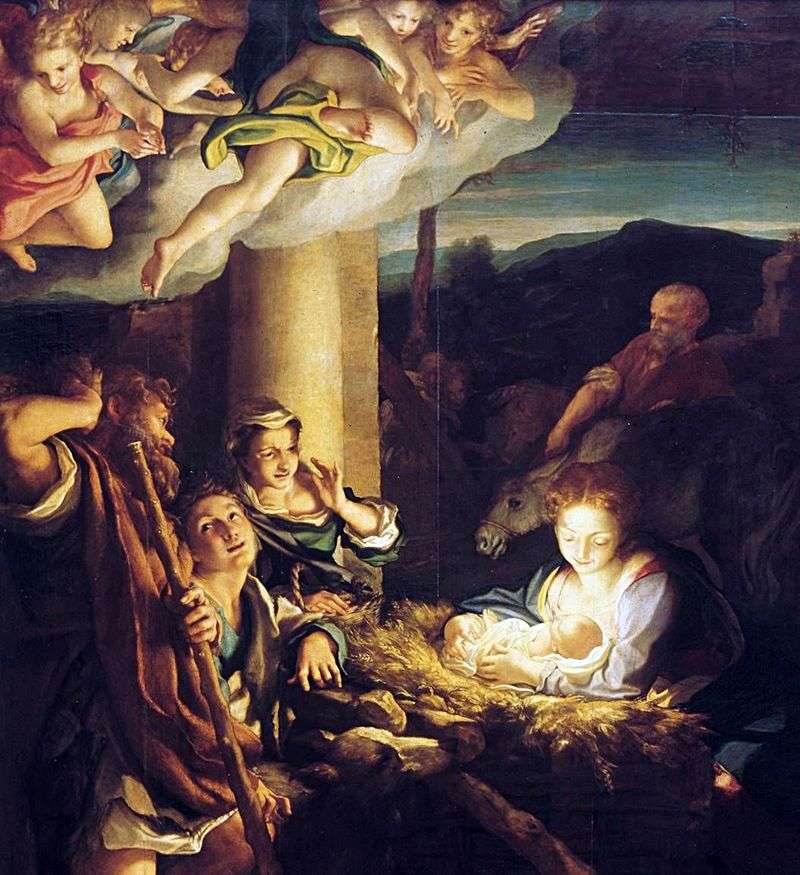
In the apse of the Roman Church of Santa Maria in Trastevere, the mosaic of Cavallini, created by him in 1291 on the order of Bertholdo Stefaneski, was preserved. Here is a reproduction of one of the six scenes of this mosaic cycle, dedicated to the life of Mary. In basic terms, he follows the canons of Byzantine iconography, but in the pictorial forms he retains the Roman traditions.
In the center, Maria is depicted on a white platform. Her solemn calmness is emphasized by the expression on her face, her gaze directed to the distance. Her dignified figure stands out not only in scale, but also the dark contrast of the triangular entrance to the schematically depicted rocky cave, which also includes a swaddled baby and two symbolizing the Old and New Testament animals, the ox and the ass. In the lower left corner of the composition in front of the cave is depicted Joseph in a red cloak; he sits on a rock, deep in thought.
In the lower right corner of the picture – a flock of sheep, dog, shepherds, one of them enthusiastically playing the horn, the other listens to the angel is the message shown on the gold background of the sky above the cave. Providing symmetry of the picture, the artist placed on the other side of the cave two angels, worshiping the newborn.
In the foreground, next to the hut and the tower, is the source of the fragrant oil, which, according to legend, was scored in Rome during the birth of Christ. Above this source was built the church of Santa Maria in Trastevere. The realism of the bucolic genre scene with the shepherds, the plastic shapes of the figures, their clothes and movements, the vivid color modeled by chiaroscuros and denoting the spatiality, and finally the mosaic technique itself – all this indicates the direct influence of late antique art.
 Nativité du Christ. – Pietro Cavallini
Nativité du Christ. – Pietro Cavallini Navidad de Cristo.- Pietro Cavallini
Navidad de Cristo.- Pietro Cavallini Birth of Mary by Pietro Lorenzetti
Birth of Mary by Pietro Lorenzetti Nativity of Christ (Night) by Correggio (Antonio Allegri)
Nativity of Christ (Night) by Correggio (Antonio Allegri) Martyrdom of Franciscans in Ceuta by Pietro Lorenzetti
Martyrdom of Franciscans in Ceuta by Pietro Lorenzetti Candy by Pietro Lorenzetti
Candy by Pietro Lorenzetti Cover of the Mother of God
Cover of the Mother of God Creation of Adam and terrestrial animals by Paolo Uccello
Creation of Adam and terrestrial animals by Paolo Uccello